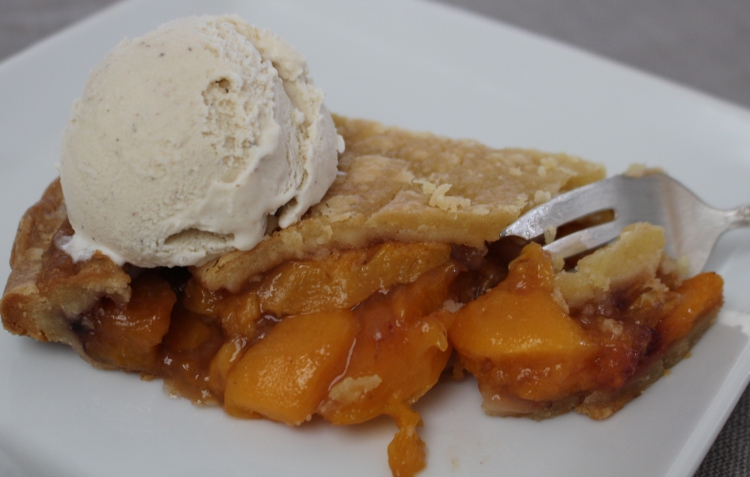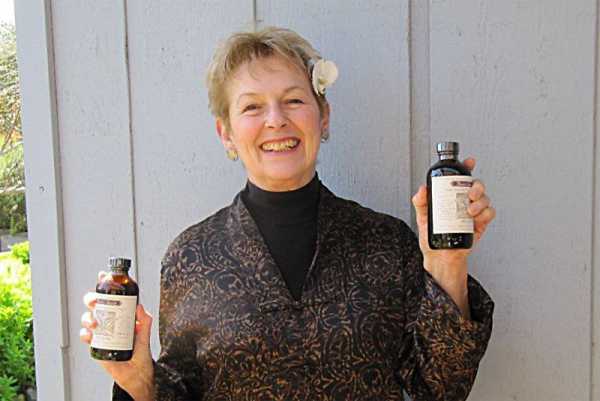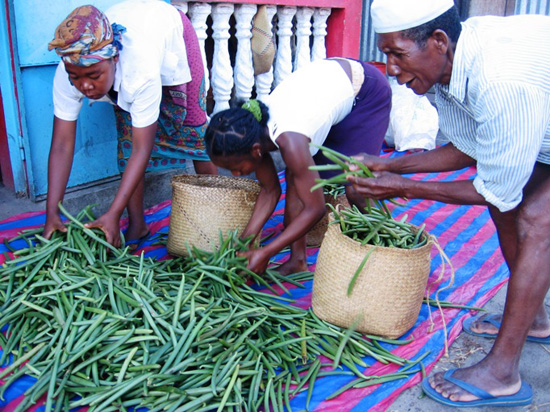
I'm amazed at how superior your vanilla is!
– Des, The Grommet
Cloves, Syzygium aromaticum, Eugenia aromaticum or Eugenia caryophyllata, are the dried flower buds of trees in the Myrtaceae family. The tree is native to Indonesia and India. The flower buds are pale at first, then turn green and finally crimson red. At this point they are ready to harvest. The ball in the center of the clove is where four undeveloped flower petals were before being dried.
Until relatively recently, the majority of cloves were grown in the Moluccas in Indonesia, known as the Spice Islands. Cloves were traded to Europe and were extremely valuable, as were pepper and nutmeg. The Portuguese controlled the cloves market, which is why Queen Isabella wanted Christopher Columbus to find an alternate route to the Moluccas from the one the Portuguese used. The Spanish did briefly grab the Moluccas from the Portuguese, but the Dutch then took it from the Spanish, creating the Dutch East Indies. In the late 1700s, the French managed to get cloves to Mauritius, and from there to Zanzibar, Guiana, Brazil and much of the West Indies. This subsequently dropped the price of cloves and made them more accessible.
Cloves are used worldwide as a flavoring in both savory and sweet foods, and in beverages. Indian foods, especially north Indian cuisine, use cloves extensively. They are a popular addition to baked goods throughout much of Europe and the United States (what would we do without cloves in pumpkin pie or carrot cake?). Because of the Dutch involvement in the spice trade, cloves are especially popular in baked goods in the Netherlands.
Cloves are used in both traditional Chinese medicine and Indian Ayervedic medicine, and in Western medicine cloves are used to ease dental pain and to reduce fever. Diluted in water, cloves can help with digestion and abdominal distress. There is some indication that cloves can also lower blood glucose levels.
The active ingredient in cloves, eugenol, was the first aromatic oil used to create imitation vanilla. It didn’t taste much like vanilla, but because vanilla was scarce and extremely expensive, it was used as a substitute. Cloves are also used as an additive in cigarettes, especially popular in Indonesian cigarettes. Pommanders and spicy potpourris often contain cloves for their sweet, aromatic oils. Their aroma definitely evokes the autumn and winter holidays in Europe and the United States.
I was given a small bottle of Rain’s Choice in a gift basket and I have been hooked ever since. The flavor makes all of my baking so much better! I will never use grocery store vanilla again!


© 2021. All Rights Reserved
Designed/Developed by Kat & Mouse